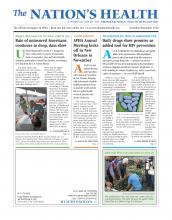Children are more likely to have respiratory issues, such as bronchitis, if their parents do not use ventilation near gas stoves, a recent study found.
Parents who used ventilation systems near their stove, such as an exhaust fan, or did not use the stove to heat the home saw fewer reported cases of chronic respiratory illness in their children, according to a study published Sept. 2 in Environmental Health.
Gas stoves emit indoor air pollutants, such as nitrogen dioxide, which can worsen respiratory illnesses such as asthma, the study said. Some families use gas stoves to heat their homes as well as to cook, which is not recommended.
“In terms of environmentally driven health disparities, indoor air pollution is a very important topic,” said Eric Coker, MS, a study author and doctoral student in environmental and occupational health and safety at Oregon State University’s College of Public Health and Human Sciences. “We know low-income communities tend to live in older housing. They might not have the ventilation in their home.”
The study looked at more than 7,300 children ages 2 to 16 in the National Health and Nutrition Examination Survey III. Parents who said they had gas stoves were asked questions, such as whether they had an exhaust fan nearby that sends fumes outside of the house and how often the fan is used. Children also completed physical exams to assess their respiratory health.
A child’s risk for asthma, for example, dropped by 14 percent in homes that used ventilation and by 38 percent in homes that did not use the stove for home heating, the study said. Asthma risk dropped by 59 percent for homes that used ventilation and did not use the stove to heat the home. This was in comparison to children in homes where parents used the gas stove to heat the house and did not use ventilation, the study said.
Using a gas stove to heat a home can cause carbon monoxide to build up, according to the Centers for Disease Control and Prevention. Unfortunately, 90 percent of participants who said they did not use ventilation had no source of ventilation in the home, such as an exhaust system, Coker said.
Coker said it is important for doctors to record an environmental exposure history of younger patients for potential asthma triggers, including questions about stove ventilation.
“From a public policy standpoint, improving the infrastructure of homes is a necessary step,” Coker said. “It’s more than behavior modification. It goes beyond that. We need to upgrade people’s ventilation systems. We need to modify exhaust systems.”
For more information visit www.ehjournal.net/content/13/1/71.
- Copyright The Nation’s Health, American Public Health Association









